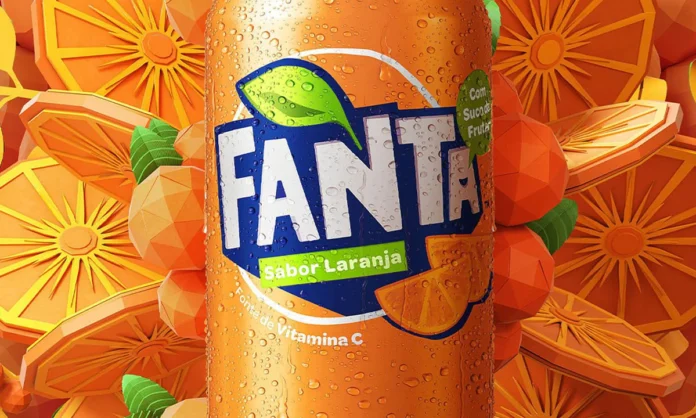Fanta is one of the major soft drink brands owned by The Coca-Cola Company, originally created in 1940 during World War II in Nazi Germany. It was developed by Coca-Cola’s German division when the U.S. placed trade embargos on Germany, preventing access to the ingredients for Coca-Cola syrup. As of 2023, Coca-Cola’s global revenue is around $44 billion, with Fanta being one of the most recognized and consumed beverages in the company’s portfolio.
Market Position
Fanta ranks as one of the top-selling fruit-flavored sodas globally. Available in over 190 countries, Fanta is especially popular in regions like Europe and Africa, and it consistently competes with other fruit-flavored drinks like Mirinda (PepsiCo). It has over 90 different flavors, with variations that cater to regional preferences. Fanta is often one of the first brands Coca-Cola introduces in new markets due to its broad appeal.
Interesting Facts
- Fanta Was Created in Nazi Germany: Fanta was invented in 1940 by Coca-Cola’s German subsidiary during WWII. Due to the U.S. embargo on Germany, ingredients for Coca-Cola’s signature syrup couldn’t be imported. As a solution, the local team created Fanta using local ingredients like fruit scraps, including apple fibers and whey. It became a major hit, and after the war, Coca-Cola integrated Fanta into its global portfolio.
- The Name “Fanta” Came from a Contest: The name “Fanta” was derived from the German word “Fantasie”, meaning “imagination.” It was chosen during a brainstorming session where employees were asked to come up with a name for the new product.
- Orange Is the Most Popular Flavor Globally: While Fanta offers a wide variety of flavors, orange is by far the most popular worldwide. In fact, Fanta Orange was reintroduced after WWII in the 1950s and has become the iconic flavor of the brand. In many countries, when people refer to Fanta, they usually mean Fanta Orange.
- Fanta’s Popularity in Africa: Fanta is particularly popular in Africa, where it is often the drink of choice at local celebrations and events. In countries like Nigeria and South Africa, Fanta has been customized to match local tastes and has even become part of the cultural fabric.
- Marketing to Youth: Fanta’s marketing is aimed primarily at a younger audience, with vibrant, playful advertisements and campaigns. The brand’s bright colors, energetic branding, and association with fun are key elements in its appeal to younger generations.
- Fanta in the “Fanta Girls” Campaign: Fanta became well-known for its “Fanta Girls” marketing campaign in the 1990s and 2000s. The campaign featured animated women, each representing a different Fanta flavor, dancing and singing in colorful commercials. It was designed to appeal to a young audience and was highly successful in increasing Fanta’s visibility.
- Global Flavors: While Fanta Orange is a global favorite, other regions have their own specific flavors. For instance, Fanta Shokata (elderflower and lemon) is popular in Eastern Europe, while Fanta Pineapple has a strong presence in Hawaii and the Caribbean. In Japan, you can find flavors like Melon Cream and Grape, while Thailand and Indonesia offer unique flavors like Soursop and Lychee.
- Fanta’s Sustainable Packaging Initiative: Coca-Cola has started using recycled plastic in some of its Fanta bottles to combat environmental concerns over plastic waste. This initiative is part of Coca-Cola’s broader World Without Waste sustainability program.
- 2013 Formula Change in the UK: In 2013, Fanta in the UK underwent a formula change, significantly reducing its sugar content by replacing it with artificial sweeteners like aspartame. The move was part of a broader trend to meet new health guidelines, but it upset many consumers who preferred the original taste. Despite complaints, the change remains in place as Coca-Cola focuses on offering healthier options.
- “Fanta Berry” Color Issue: In 2002, when Fanta introduced its Berry flavor in the U.S., consumers reported that the artificial coloring used in the drink stained their mouths and teeth bright blue. While this wasn’t harmful, it led to complaints and eventual changes in the dye used in the flavor.
